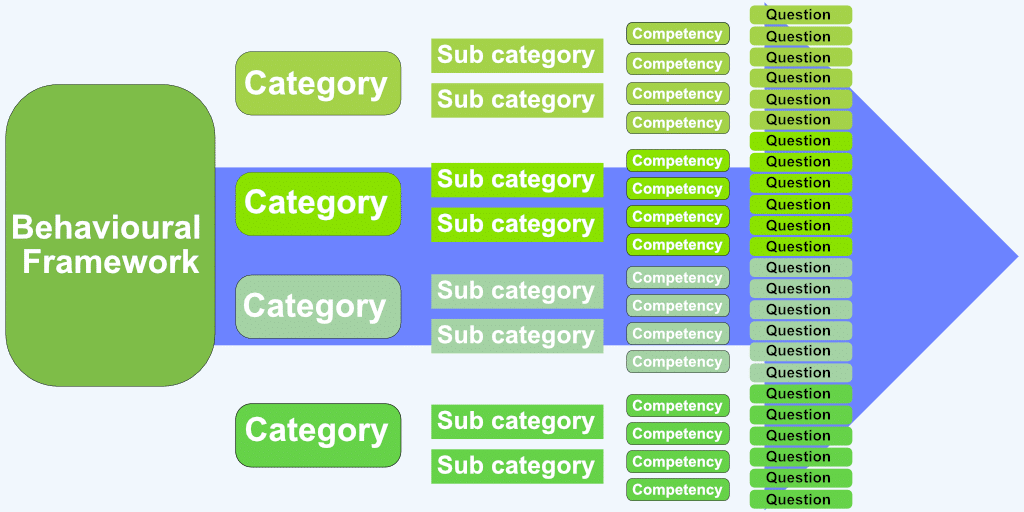
Questionnaire Design
The instrument used in a 360 degree feedback process needs to describe the behaviours which relate to actual job performance. It also needs to be a reliable measurement tool.
Whether the same instrument is used across the organisation or for different job roles will depend on how relevant the behaviours are for the different groups involved. The instrument needs to describe specific work behaviours and ideally relate to existing measurement systems within the organisation, for example, competencies. It also needs to be in line with the organisation’s culture and values.
We trust that our Practice Five® framework fits your purpose, but if not we can provide other models, implement one already in use in your organisation or design one to meet your needs.
A well-designed questionnaire should offer respondents the opportunity to indicate where they have not had the opportunity to observe a behaviour, or where the behaviour is not relevant to the job, so as not to force them to guess.
Identify Competencies and Expectations for your Organisation
The first thing to decide is whether you want to work from an existing competency model or develop your own. Resist the temptation to re-invent the wheel. Many organisations spend a great deal of time and effort creating a “unique” competency model for their 360 degree feedback program which ends up looking quite similar to other existing competency models.
If you will use 360 feedback surveys on a limited basis in your organisation, consider using an existing competency model, perhaps with some minor adjustments to the evaluation form as needed. For an organisation-wide 360 degree feedback program, you may want to spend some time developing a unique competency model that incorporates your organisation’s leadership model and core values as well as the behaviours and performance standards that are expected of all employees.

SurveyMaster360 should be able to accommodate any design that you provide. Questions can be organised into an unlimited number of categories, subcategories, competencies and questions. For instance our Practice Five framework has four levels. This means that reporting can be provided at each level as well as demographical breakdowns.
SurveyMaster360 also allows three versions of the same question. This allows for unique grammar differences between:
- Subjects
- Others
- Reporting
For example, the question “Knows own strengths and limitations”

Notice the use of pseudocode ([pseudo_code]) in the Other’s version. SurveyMaster360 uses data from the Subject’s details to populate gender and name information inside question construction. This personalises the questionnaire form and provides more accurate completion of each survey.
If Sara Green is the Subject in our example above, the Other’s version of the question would read:
Sara knows her own strengths and limitations
Ready to find out more?
Call us today and ask how we can assist you on +617 3123 5577 or click the button to ask us to contact you.
